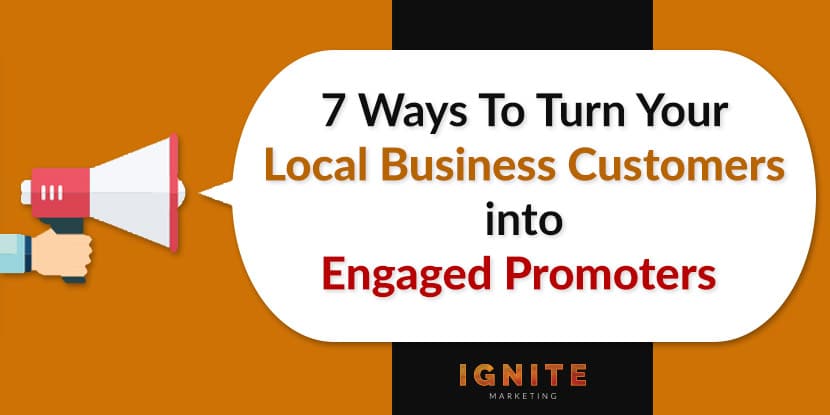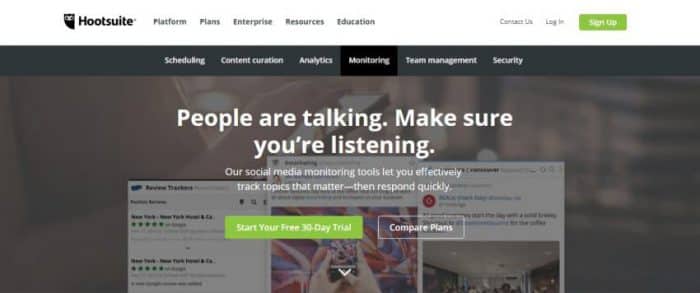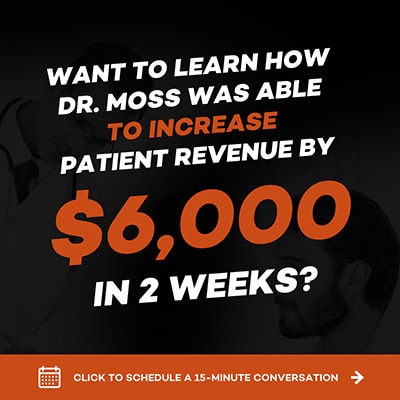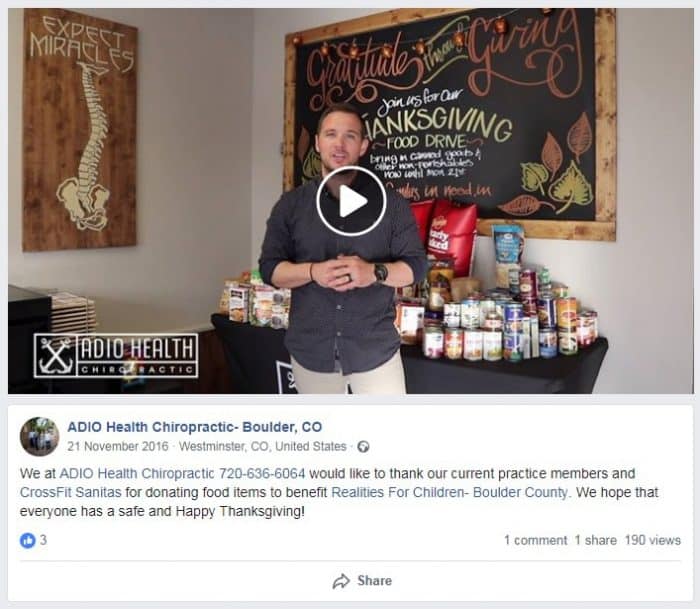


The Entire Series:
Congrats. You’ve closed your prospect and made your wallet a little thicker.
Time to move on to the next lead, right?
Not quite.
Studies show:
That’s not to say you shouldn’t be pursuing new leads, but it is clear customer retention holds significant value for a business.
BUT creating engaged promoters is about more than keeping a customer, though.
Every customer has the ability to help you attract more customers. When people love you, they tell their family, friends, and colleagues about your business.
So, how do you get them to love you?
If you’ve been following our series on inbound marketing you’ll know that the answer to this question brings us to the final phase of the inbound process: the ‘Delight’ stage.
 Many businesses often neglect this phase, abandoning customers as soon as they’ve made a purchase. What they fail to realize is that once a prospect becomes a paying customer their journey isn’t over and neither is your job.
Many businesses often neglect this phase, abandoning customers as soon as they’ve made a purchase. What they fail to realize is that once a prospect becomes a paying customer their journey isn’t over and neither is your job.
It’s important to understand that delighting patrons goes far beyond providing them with top-notch products and services. Yes, you want to satisfy them and build customer loyalty so that they keep buying from you, but you also want to transform them into evangelical promoters of your business. Great products and stellar customer service isn’t enough anymore.
Perhaps Seth Godin summed up what this phase is all about best:
“It’s easier to love a brand when the brand loves you back.”
So the real question is: do you love your customers, and if so, how do you show it?
Getting people to love you enough to promote your business is by no means easy. It relies heavily on building relationships, which takes time and effort. In many cases, small and local businesses are at a distinct advantage because there’s more personal interaction between seller and buyer than you’ll generally find at larger corporations.
In this post, we’ll cover some of the most effective tools and tactics to help you truly dazzle your customers so that they’re not just repeat buyers who are loyal to your brand but also engaged promoters.
One of the greatest tools at any business’s disposal is the humble survey. It’s quick and easy to develop, cost-effective, and relatively simple to administer via online platforms, mobile devices, kiosks, telephone, in-office interactions, and snail mail. You can gather a broad range of data from a large number of respondents with very little effort. Depending on the survey software you choose, you can use the tool to determine things like validity, reliability, and statistical significance.
Besides factual information, surveys allow you to collect data on opinions, attitudes, values, beliefs, and behaviors. They give you an opportunity to ask customers what they want, how they feel about you, what you could improve in your business, whether they’d recommend your products and services to others, and so much more. This kind of insightful feedback can help you tap into the mindset of your buyers, drive your content creation, and guide future marketing decisions.
Let’s take a look at a patient satisfaction survey by Sunrise Chiropractic.

I specifically want to draw your attention to two questions:
As I mentioned earlier, delight requires you to go above and beyond just providing satisfactory products and services. In this instance, these strategic questions will help Sunrise Chiropractic do that.
Question one allows them to obtain the name of the referring customer so that they can personally reach out and show their appreciation. This might be through a simple telephone call, free chiropractic treatment, or something else that demonstrates their gratitude. In return, the referring customer feels valued, thereby strengthening their loyalty to the practice.
Question two allows Sunrise Chiropractic to find out what they’re doing right so that they can continue doing it, as well as what they could be doing better. This gives them an opportunity to improve a weakness, creating an advantage over competing chiropractors in the area while creating a better experience for new and existing clients.
How do you develop your own survey?
Measuring satisfaction through a survey is perhaps one of the most common tactics you’ll find in a business, but you can also use surveys to validate ideas, define your community guidelines, and gather feedback on specific things like loyalty or rewards programs.
Do you want to find out what kind of content will help solve your customers’ problems? Ask them. Want to know what you can improve about your processes to create a better experience for customers? Ask them. Want to know what kind of community projects would interest them? Ask them. The whole point of this exercise is to find out exactly what you can do to delight them, but that starts with understanding what you and your team want to learn and how your survey questions are going to help you do that.
Besides ensuring people complete the survey, you want to design your questions in a way that produces the most useful results. There’s no point in gaining answers that only create more questions for you.
First, you should avoid bias questions so that you don’t influence the way people answer. For example, don’t ask, “What do you think of our awesome website?” Do ask, “What is your opinion of our website?” Leading questions can throw your survey results off balance, so be careful about your word choice.
Second, be specific when possible. Questions can be asked in multiple ways, but you always want to err on the side of real insight over vagueness. If you have “yes” or “no” questions, consider whether you can rephrase the question and expand on the answer options. For example, instead of asking customers whether they’d like you to introduce a loyalty program, give them a list of incentive options that would make them buy more.
Third, use open-ended questions wisely. Grammar and spelling issues can make analyzing responses a nightmare. In addition, respondents might use different words for the products and services you provide. Unless you want customers to provide additional detail, use multiple choice and dropdown menus when possible.
Fourth, make sure your questions are in a logical order and use skip logic when needed. Skip logic is simply a feature of survey forms that changes what question an individual sees based on the answer to the current question. For example, you might want men and women to answer a different set of questions. Whichever gender the individual clicks will create a custom path through the survey to ensure they “skip” to the questions meant for them.
Besides testing the survey internally by getting your team to go through it, select a small group of customers to do a test run. You need to ensure participants work through the survey as you intended and that there aren’t any issues, additions, or awkwardly phrased questions you need to deal with before releasing your survey into the wild.
When and how you send a particular survey will depend on your workflow. This might include sending an email to all existing customers, sending the survey to individual customers as they complete certain actions or behaviors, setting up the survey on your website, conducting the survey over the phone, or any number of other options. Consider where surveys fit in best with what your team is doing and what you want to achieve.
The number of responses you receive will depend on the engagement level of your customers. While some will answer almost right away, you might need to factor in a reminder email to give others a nudge. If you need feedback urgently, consider throwing in an incentive to ramp up motivation. Some surveys won’t have deadlines, so you can leave those open-ended.
However, you do want to start compiling data, removing invalid responses, and creating a list of potential steps you need to take in order to improve your business and processes and delight your customers.
Feedback requires action. Did you find out that Cindy Lou Who’s favorite meal at your local restaurant is a cheeseburger? Send a voucher for one. Did you find out that Al Bundy could use some advice on taking care of the garden you just landscaped for him? Send a link to your free ebook.
Look, you don’t always need to act for every individual. Filter through the ideas and suggestions you receive, focusing on the most important ones that align with your customer goals, business, and community. Prioritize what needs to be done now and what can be done later, and then allocate resources accordingly. The key is to find things you can do that will exceed the expectations of your customers and keep them happy and loyal.
A final note on surveys: there are a number of popular online survey tools you can use to create your own questionnaire, including SurveyMonkey, Typeform, and Google Forms. Many of them have both free and paid versions. Before you decide which one to use, consider your CRM software and available integrations. You might need to use additional software like Zapier to help integrate and automate surveys as part of your sales pipeline and workflow.

Social media plays a significant role in each of the inbound marketing phases, but it can be particularly useful in delighting customers. Using social monitoring tools to listen for customer questions, comments, likes, and shares, gives you an opportunity to reach out to specific people with relevant answers, content, and messages of appreciation.
Consider the following example by Toyota:

Toyota had their own brand name on their social media radar and uncovered a customer whose truck was destroyed while helping a community in need. Not only did they respond with words of praise, but they promised to replace the vehicle and followed through on that promise.
It’s not always possible to do something that generous, but a little goes a long way in fostering affinity and goodwill. Do you have customers who are continuously sharing your content? Are they commenting on your posts? These interactions are good indicators of patrons who are engaged and turning into promoters of your business. You’ll want to monitor social media so that you can detect this type of activity and build stronger relationships with these people. A little reward wouldn’t hurt either.
How do you listen?
Step 1: Know who you want to listen to and where. Who are your customers? Which social media platforms do they frequently use? What kind of words are they using to describe your business, products, and services? This isn’t about listening to everyone’s conversations everywhere. This is about focusing in on those who have already purchased your products and services so that you can find ways to make them feel special and build on their loyalty to you.
Step 2: Invest in the right technology. A quick Google search will surface countless suggestions for social media listening tools. As with most types of software, you’ll find both free and paid versions, but it’s crucial to explore your options to find one that makes the most sense for your business. Some of them have a massive learning curve while others are fairly simple. If you’re looking for options that have robust features for social customer service, consider Sparkcentral, Sprout Social, or Reply by Buffer. You’ll also find that some CRM solutions (e.g. HubSpot) allow users to set up alerts for leads. Be sure to check out the capabilities of your chosen platform.
Step 3: Be ready to respond. The chances are that Toyota’s social media manager had to confirm a response with the higher-ups before promising a replacement truck at no cost. Although you’re unlikely to deal with a situation on this level, create a ‘Delight’ playbook of sorts to guide your team in their responses. They might still need to clear things with you first, but you should also take into account that social media happens in real-time and demands quick responses.
Here are some additional top tips to help you do social monitoring the right way:
Listening is the key to good communication and a building block for any strong relationship. Don’t get caught up in a one-sided conversation and forget your customers are human beings who want to be treated like human beings and not ATMs.
Also referred to as “smart” or “adaptive” content, dynamic content takes the concept of personalization further than ever before by changing aspects of a website, ad, landing page, call-to-action, form, or email, based on a customer’s interests, past behavior, lifecycle stage, preferences, and more. It essentially creates a custom experience for that particular person at that moment.
Here’s an example of dynamic email content sent by Nordstrom:

(Source: Instapage)
Instead of sending all subscribers the same email, they personalized it based on location and associated weather. This type of tailoring makes the customer experience more intuitive and relevant while increasing conversions.
People who buy from your business want to feel like they matter to you—like they’re your people, part of an elite club. Consider the differences between a brand new visitor to your site and an existing customer. How can you use dynamic text, CTAs, and images to personalize the content each of these individual sees?
For a local business, this tactic might seem complex. And it is, which is why you should assess whether this is something you want to pursue. Many CRMs, email marketing, and automation tools have varying dynamic content features baked into their offering. For example, ActiveCampaign (the CRM and automation tool we recommend for small and local businesses) offers dynamic content creation capabilities as part of their email marketing platform. HubSpot has a more robust smart content offering, but it’s part of their Professional Package and starts at $800 per month.
Do your research, weigh up the pros and cons, and then make the best decision for your business. Even if you decide against it, we have a few other tactics that’ll help you delight the promoter out of your customer.
Sure, your products and services solve at least one customer problem, but what about the next problem?
Well, if you truly want to surprise and delight customers, you’ll anticipate their needs and solve those too.
It’s entrepreneurial nature to keep pushing your products, services, and agendas at people, but that only leads to short-term gains. You want to solve present and future problems so that you can empower customers to fulfill their goals, needs, and wants. Constantly giving them solutions through education, recommendations, tools, and additional products and services will help you create life-long patrons who not only support your business but also promote it.
Here’s a great example from Lyft:

(Source: Sparkcentral)
While the company could have just as easily responded with a witty comment, they empathized with their customer and offered a solution. It cost them a free ride but what’s a few bucks compared to repeat business and a ton of goodwill?
Let’s say you’re a dentist filling a cavity. Could your patient use a discount voucher for a future teeth cleaning or a recommendation for a better toothbrush? As a financial planner, could your clients use a handy spread sheet or app to create a monthly budget?
You have multiple options for mining data about customers and their interactions with you, including two-way conversations, social media, online reviews of your business, and surveys to name a few. Use this information to figure out the goals of your customers and then brainstorm ways to help them succeed. The bottom line is help people and they will help you.
In an age where most people interact behind a computer screen, mobile phone, or tablet, face-to-face engagement is as powerful as it ever was. You simply cannot build a relationship remotely the way you can meeting with customers in person.
One of the easiest ways to connect one-on-one while getting existing patrons to bring in new leads is by hosting a fun community event that meets the needs and interests of your customers. Depending on the type of local business you own, consider bringing in a guest speaker, creating VIP experiences for your most loyal customers, hosting festivals, parties, competitions, and awards, and running free seminars, workshops, or classes.
In the following example, Sanctuary Fitness invites their customers to unwind and hang out socially at a local craft brewery—a departure from their intense HIIT classes.

Take note of their call-to-action: “Bring your friends, family and/or colleagues and let’s have some fun.” This not only gives their team an opportunity to forge valuable, personal connections with existing members, but it also allows them to meet with potential leads in person.
In this next example, Young’s Equipment in Saskatchewan combines customer appreciation with an in-person bbq where there will be a lucky draw for a grill.

Notice how they keep this very focused on giving back to the people who have already given to them. This brings us to our next tip for delighting buyers.
 Besides customer appreciation days, brainstorm additional ways you can show your patrons some love and make them feel valued. For example, send complimentary vouchers, products, or gifts on birthdays. Many restaurants do this well, singing happy birthday and offering their customer a free drink or dessert with their meal.
Besides customer appreciation days, brainstorm additional ways you can show your patrons some love and make them feel valued. For example, send complimentary vouchers, products, or gifts on birthdays. Many restaurants do this well, singing happy birthday and offering their customer a free drink or dessert with their meal.
Another great way to maintain a customer-first approach is to offer loyalty rewards and discounts. Often businesses will go after new leads with deep discounts, but think about that strategy for a minute. If you’re offering special deals to convert prospects while existing customers continue to pay full price without any sort of reward for remaining loyal to your business, what do you think the customer is going to think and feel about your brand? Make sure you don’t neglect the people who have already supported you.
Finally, delight and empower your employees. Many of these people are in consumer-facing positions, so their attitudes, behaviors, and how they feel about their job impacts the way they treat your customers. While there should definitely be guidelines, give them free rein to follow up with buyers, build relationships, and make decisions about how they can best help a customer get what they need and want. Happy employees make for happy customers.
There’s a reason customers often feel a stronger affinity for one brand over another. It’s because these brands have been able to connect in a particularly effective way—they’ve shown themselves to be human, relatable, genuine, trustworthy, and good. People want to be part of that—to feel noticed, accepted. To feel like they belong and that they’re contributing to something bigger.
As a result, many businesses are taking their social actions to social media, effectively demonstrating their humanness. Case in point, ADIO Health Chiropractic offers an excellent example of how they’re getting involved with their local community and giving back by running a food drive for foster kids.

(Source: ADIO Health’s Facebook Page)
West End Real Estate has sponsored a local walk for a charity that helps people with motor neuron disease.

Each of these examples shows that these local businesses aren’t cold, unfeeling entities. What can you do to show customers you’re more than what you do to make money?
In the grand scheme of the inbound marketing process, delighting customers is probably the easiest part. Happy customers not only stay with you, but they also spread the word, doing a good chunk of the promotional work for you and drawing in referral customers. Just make sure you give people a reason to refer others and the opportunity to do it. And don’t forget to thank them when they do.
That’s it for this inbound marketing series. What tactics are you currently implementing to convert customers into promoters for your local business? Think we’ve missed something? Share your ideas and feedback with us in the comment section below.
Read more from the series...
